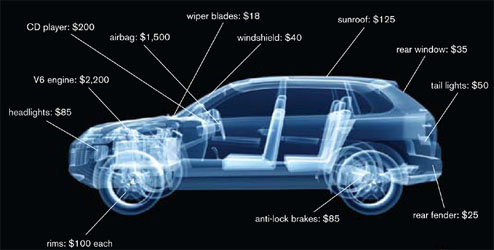Tips to Protect Your Vehicle from Thieves
Summer is supposed to be the hottest season of the year for vehicle theft, with July and August ranking as the highest auto theft months of the year, and July 4th in particular ranking #3 on the list of holidays with the highest incidents of vehicle theft.
Vehicle theft protection experts warn that consumers are growing increasingly complacent about auto theft and are not using even common sense measures to protect their vehicles from theft. The following examples illustrate that point:
In 2010, the Baltimore Regional Auto Theft Task Force studied 400 cases of recovered stolen vehicles in which arrests had been made and found that 85 percent had been stolen with the vehicle’s keys. That’s up from 25% in a 1995 study.
In 2009, the Arizona Automobile Theft Authority reported that nearly 20% of all vehicles stolen had keys left in them.
In 2008, the Texas Department of Motor Vehicles reported that thieves stole nearly 90,000 vehicles in Texas and in almost 50% of the reported cases, the key was left in the ignition.
Additionally, while vehicle theft rates may be declining, the national rate of unrecovered stolen vehicles is at its highest point in more than 25 years, with sophisticated thieves outsmarting many anti-theft devices and making big business out of vehicle theft.
A full 43 percent of vehicles stolen in 2009 were never recovered, amounting to 343,274 stolen vehicles not returned to their rightful owners.
In order to help owners protect their vehicles from today’s sophisticated professional car thieves — particularly while they are out on their summer drive vacations — the National Insurance Crime Bureau and LoJack Corporation are embarking on their fifth annual National Vehicle Theft Protection Month effort.
As part of this effort, the organizations have developed three informative YouTube videos and a podcast, which contain information about vehicle theft protection.
Additionally, the organizations offer the following advice to consumers:
By combining common sense approaches, theft prevention devices and tracking/recovery systems, consumers can protect their vehicles from theft.
The first important step: Use Common Sense Measures. Never leave keys in the vehicle with the engine running. Don’t hide a spare key in the vehicle. Close all windows and lock all doors when leaving your vehicle. Park in a well-lit area and, when at home, keep your vehicle in the garage. Don’t leave valuables visible in your car, particularly those items that include information on your identity — thieves can drive off not only with your car, but your identity as well.
The second step: Use Theft Prevention Products. A thief may be less inclined to steal your car if it has visible and audible warning devices like a wheel lock or alarm system. Immobilizers—which include smart keys, kill switches and fuel cut-off devices—can offer another means of protection. While the professionals can often disable these devices, they do offer another means of deterrence.
The third step: Use a Tracking and Recovery System. Since thieves can typically disarm most theft prevention devices, recovery systems provide the peace of mind that you’ll get your car back – often quickly – in the event it is stolen. The most effective systems are directly integrated into law enforcement, use Radio Frequency technology, which has proven to be optimal for recovering stolen vehicles, and are covert so they cannot be disengaged.






